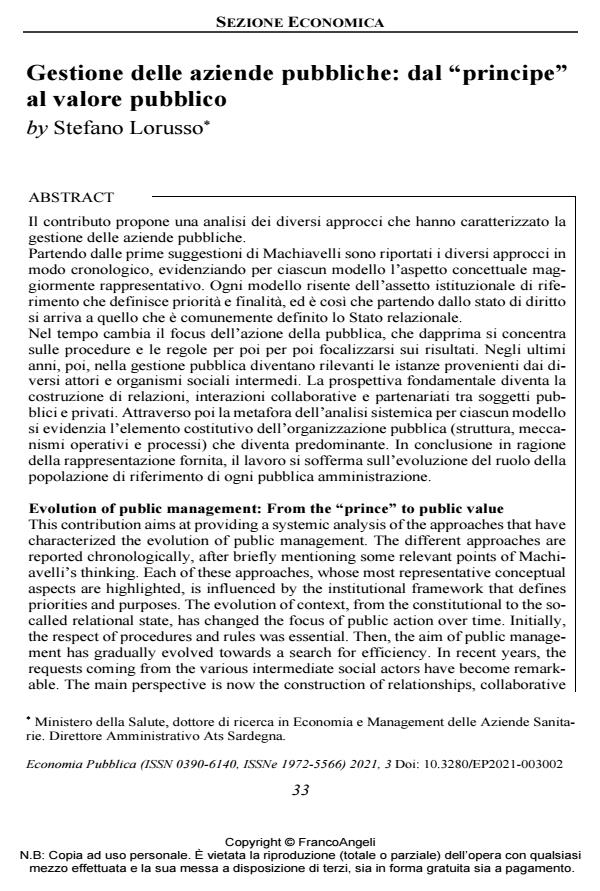Evolution of public management: From the "prince" to public value
Journal title ECONOMIA PUBBLICA
Author/s Stefano Lorusso
Publishing Year 2021 Issue 2021/3
Language Italian Pages 22 P. 33-54 File size 879 KB
DOI 10.3280/EP2021-003002
DOI is like a bar code for intellectual property: to have more infomation
click here
Below, you can see the article first page
If you want to buy this article in PDF format, you can do it, following the instructions to buy download credits

FrancoAngeli is member of Publishers International Linking Association, Inc (PILA), a not-for-profit association which run the CrossRef service enabling links to and from online scholarly content.
This contribution aims at providing a systemic analysis of the approaches that have characterized the evolution of public management. The different ap-proaches are reported chronologically, after briefly mentioning some relevant points of Machiavelli’s thinking. Each of these approaches, whose most repre-sentative conceptual aspects are highlighted, is influenced by the institutional framework that defines priorities and purposes. The evolution of context, from the constitutional to the so-called relational state, has changed the focus of pub-lic action over time. Initially, the respect of procedures and rules was essential. Then, the aim of public management has gradually evolved towards a search for efficiency. In recent years, the requests coming from the various intermediate social actors have become remarkable. The main perspective is now the con-struction of relationships, collaborative interactions and partnerships between public and private subjects. Through the metaphor of systemic analysis, this work highlights the element of the public or-ganization (structure, operating mechanisms and processes) which is predomi-nant in each approach. In conclusion, the work focuses on the evolution of the role of citizens on public administration - from mere customers to coproducers - and tries to represent the great role of public organizations in generating value
Keywords: Public administration, public management, value
Jel codes: H83, H11, M10
Stefano Lorusso, Gestione delle aziende pubbliche: dal "principe" al valore pubblico in "ECONOMIA PUBBLICA " 3/2021, pp 33-54, DOI: 10.3280/EP2021-003002